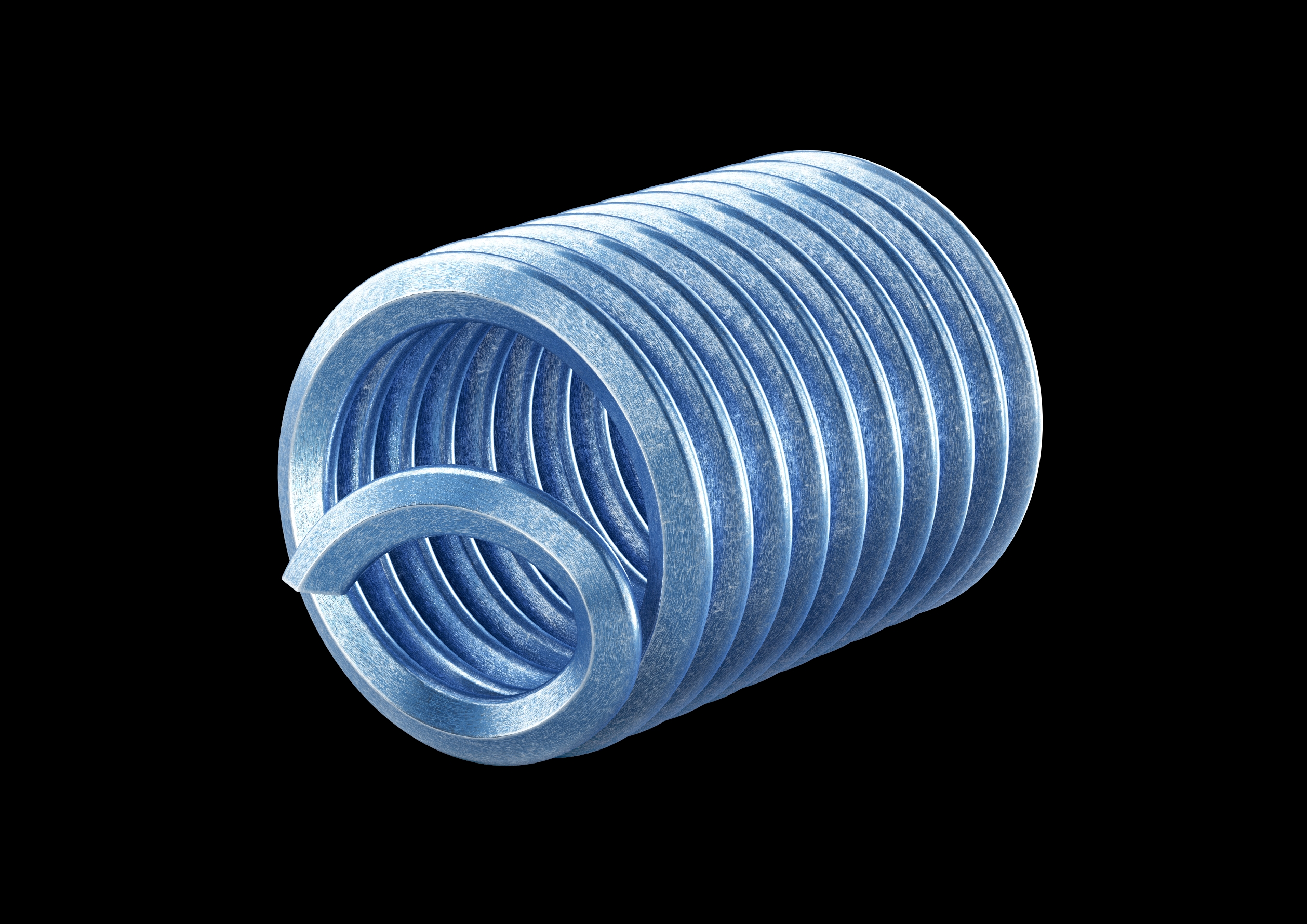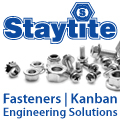
Posted to News on 1st Dec 2020, 09:47
Q&A - Helicoil threaded inserts
The Helicoil threaded insert is well known in the engineering community. It is manufactured by Bollhoff at its plant in Hull and in this article Bollhoff's Clive Brown gives us some background to Helicoil

When was Helicoil launched, by whom, and what was the reason behind its arrival?
The Heli-Coil system entered industrial life in 1939 as the Aero-Thread Screw Thread System. It was developed by an engineer, Harold Caminez, as a solution to the notch effect or stress concentration at the root of the 60 degree angle of the conventional screw thread used on Allison aircraft engines.
Is there any record of the first commercial application of Helicoil?
By the end of 1939, the development work had proceeded to a point of introducing the industry to the “Aero Thread”
Experimental orders started to trickle in on January 26 1939 and the first order was delivered, a quantity of the aero thread inserts for Pratt & Whitney. Shortly afterwards, parts were being despatched to Lycoming, Wright Aeronautical, Ranger Aircraft, Scintella Magnetta and others.
What materials is Helicoil available in?
The standard HeliCoil insert is manufactured from austenitic stainless steel. Inserts in other materials such as Alloy 90, Inconel, phosphor Bronze, and Nitronic are also available for special applications.
Where is the product manufactured?
Bollhoff manufactures the classic HeliCoil at its Hull facility in the UK: HeliCoil plus is manufactured at our Bielefeld facility in Germany.
How many versions of Helicoil are now available and – in brief – what are they designed to do?
There are currently 4 variants. The classic original HeliCoil as well as HeliCoil plus and HeliCoil Tang Free. They are all available in Free Running and Screw locking variants. Together with the newly launched HeliCoil Smart. We also have HeliCoil Oversize and HeliCoil Twinsert for repair and correctional work.
HeliCoil is designed for structural component thread reinforcement and repair.Threads are reinforced whenever low-strength light weight materials eg: aluminium, aluminium-magnesium alloys and fibre reinforced plastics are used.
The threaded insert market seems well served: how did Helicoil manage to gain a foothold in the first place, and to become what it is today?
HeliCoil is the original, the forerunner. Bollhoff are market leaders in innovation and HeliCoil has always been part of the innovation process with design changes to the insert design and the introduction of improved installation processes.
Does Bollhoff, as the manufacturer of Helicoil, provide any testing or validation facilities to confirm insert suitability, strength or durability in-situ?
An important aspect of our corporate philosophy is consistent quality management.
We are continuously striving to further improve our products and processes to give our customers maximum quality. Our quality management system is regularly audited and certified to the latest standards.
Böllhoff is one of the first companies to be successfully certified to ISO/TS 16949 – the world’s highest standard for the automotive industry. Our own laboratory accredited to DIN EN ISO/IEC 17025 and our certification to DIN EN ISO 14001 are further proof of our strong commitment to quality and the environment. These accreditations attest to the highly competent testing of our products and our environmentally conscious actions that conserve resources.
What do you say to an engineer who asks why they should use mechanical fasteners rather than bonding on an application?
One of the main reasons would be that the use of a mechanical fastener like HeliCoil or Rivnut allows a component to be assembled and disassembled multiple times without damaging individual components. In the case of Helicoil the fastener itself can also be removed and replaced without any damage to the parent component.
Further, mechanical fasteners are generally much more resistant to shock and vibrations than a bonding agent, with HeliCoil the locking coils of the Screw Locking variant also help prevent bolts from unscrewing and subsequently disengaging with the thread when an assembly is subject to vibrations.
The elastic properties of a Helicoil allow for a more uniform load and stress distribution on a joint which therefore increased the quality of the screw joint and increases the fatigue strength of the screw.
Will there be further developments in the Helicoil family?
Bollhoff has a history of innovation and is always working with engineers to develop better, more efficient and cost-effective fastening solutions!





